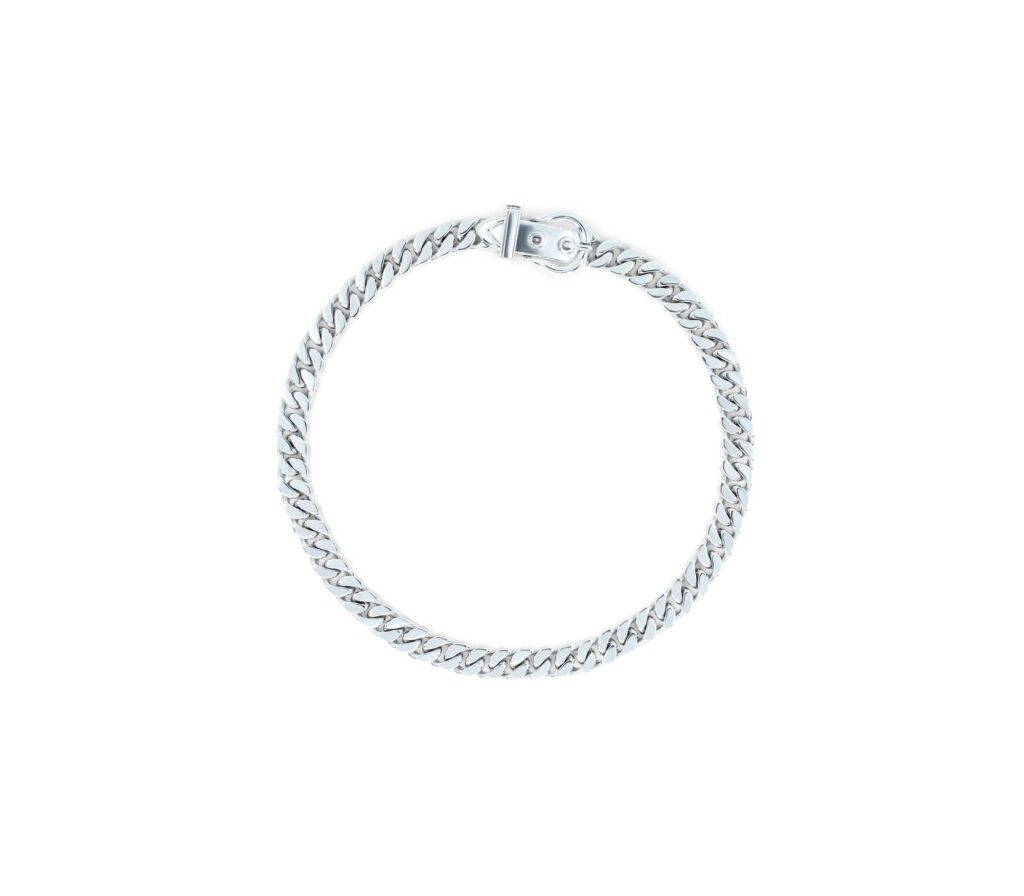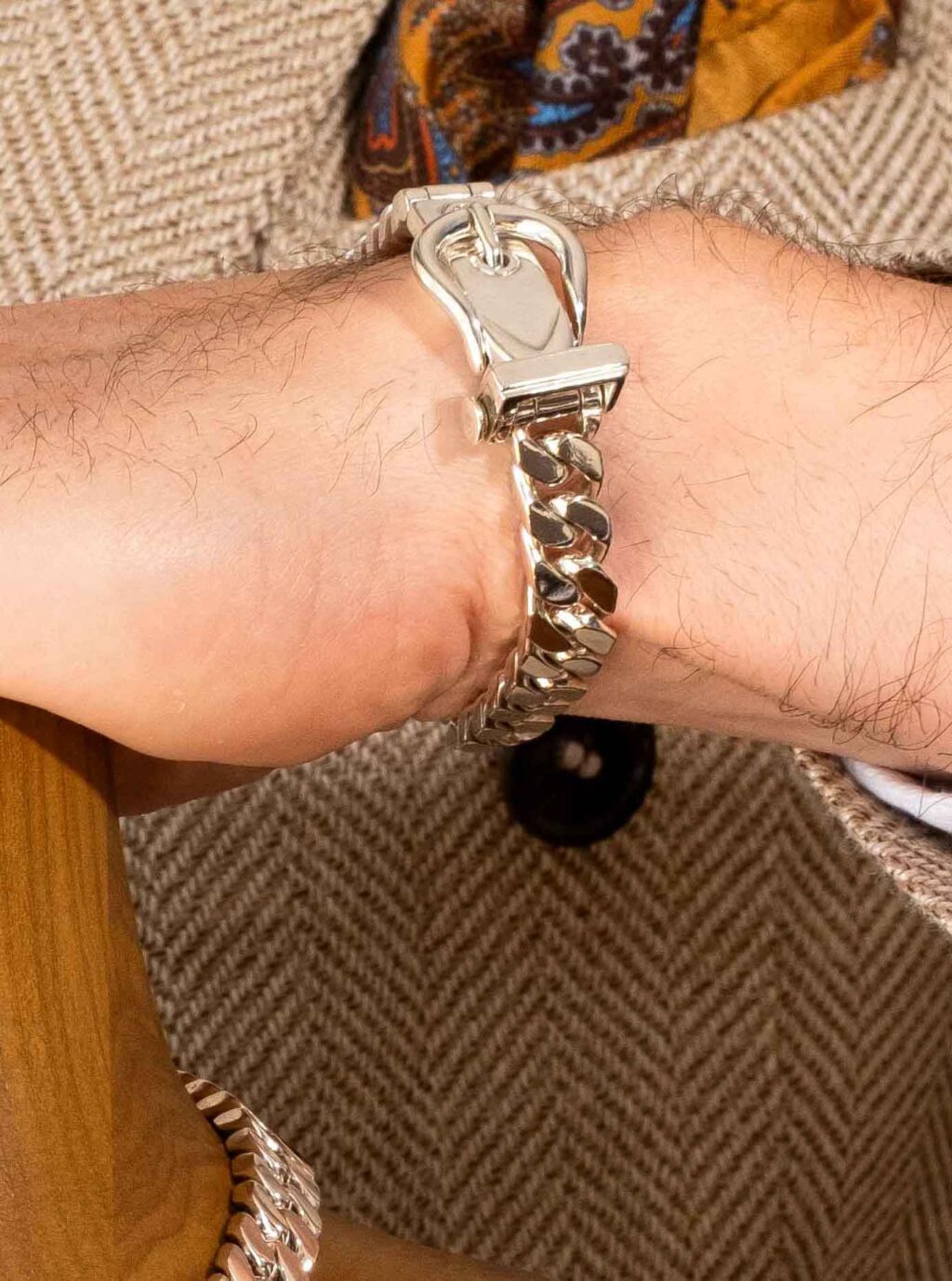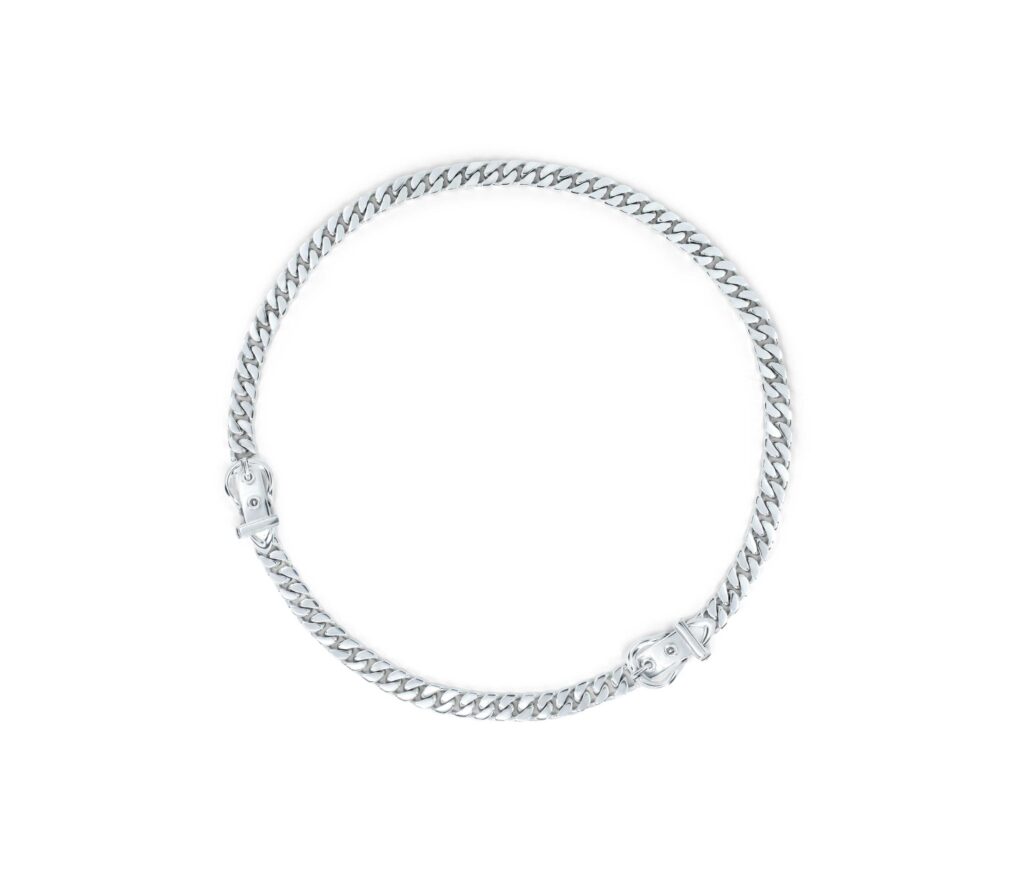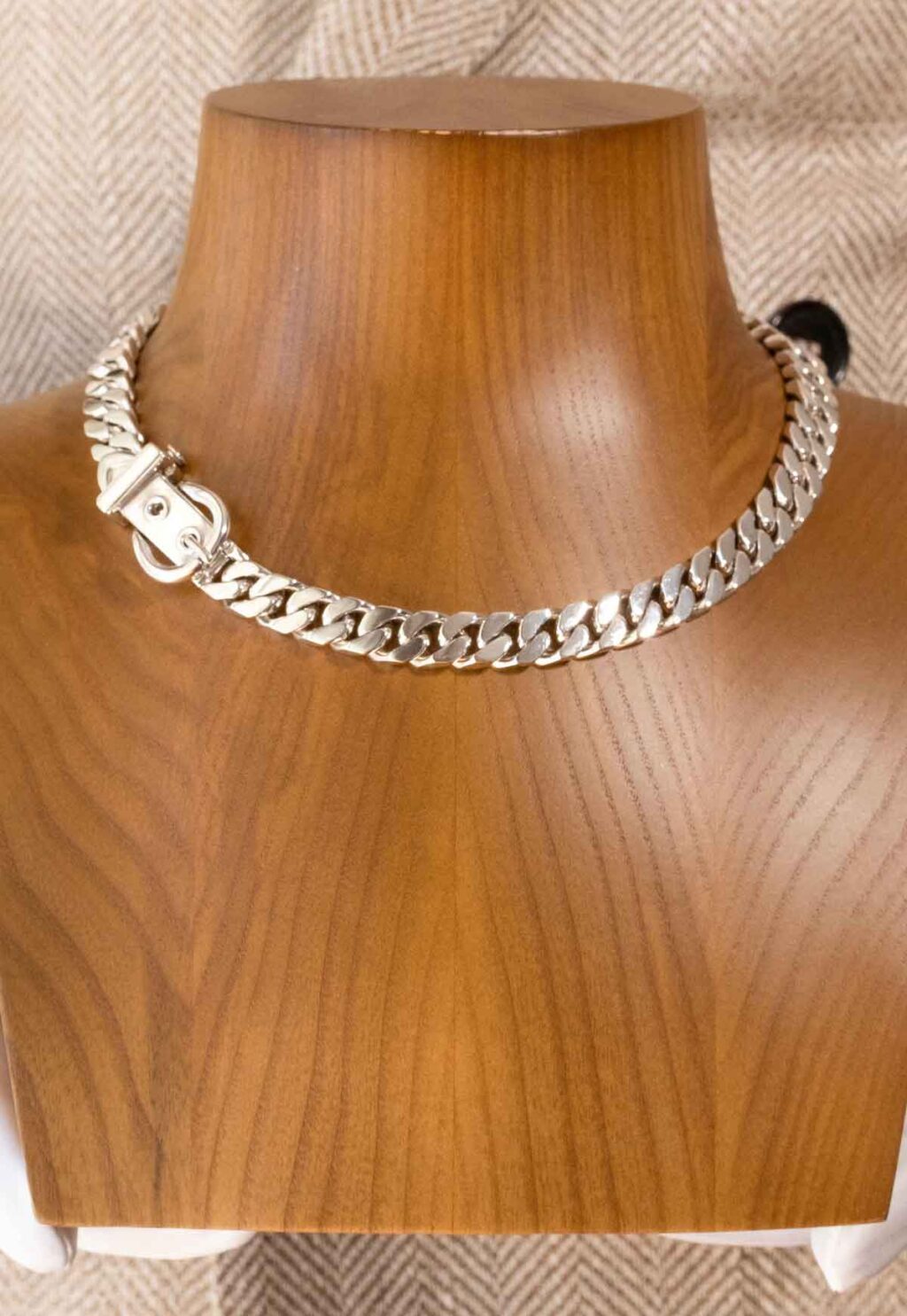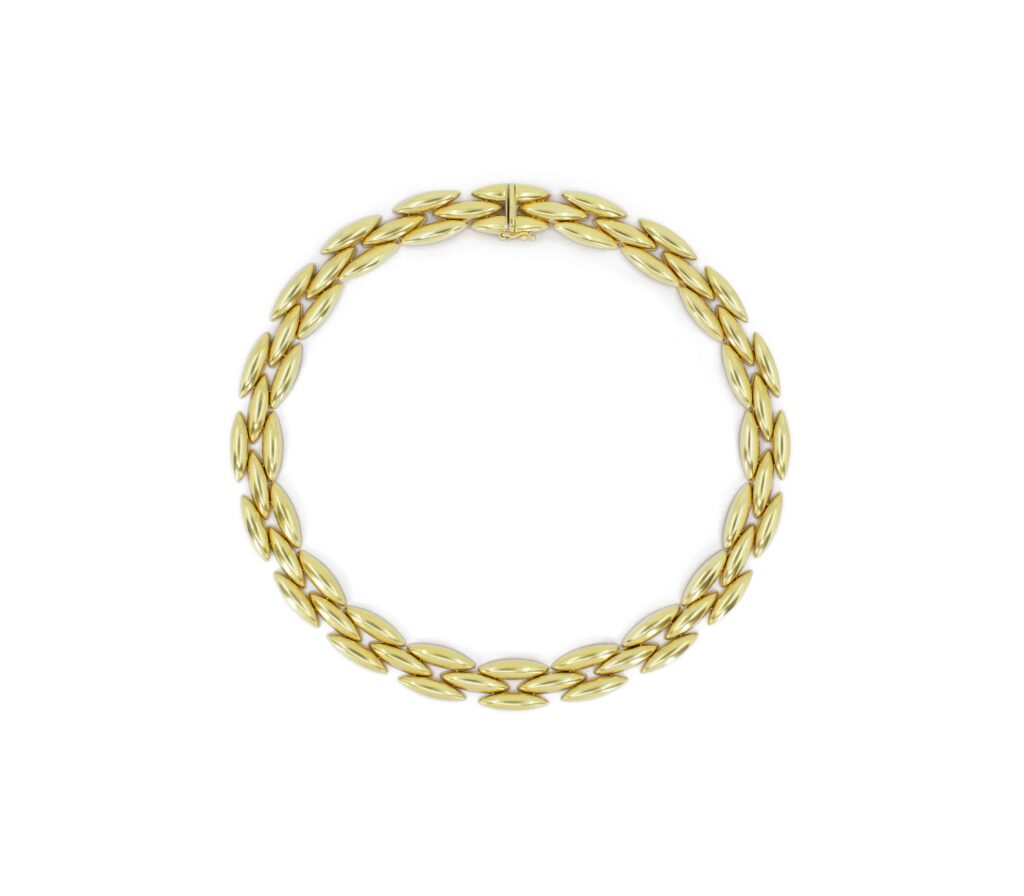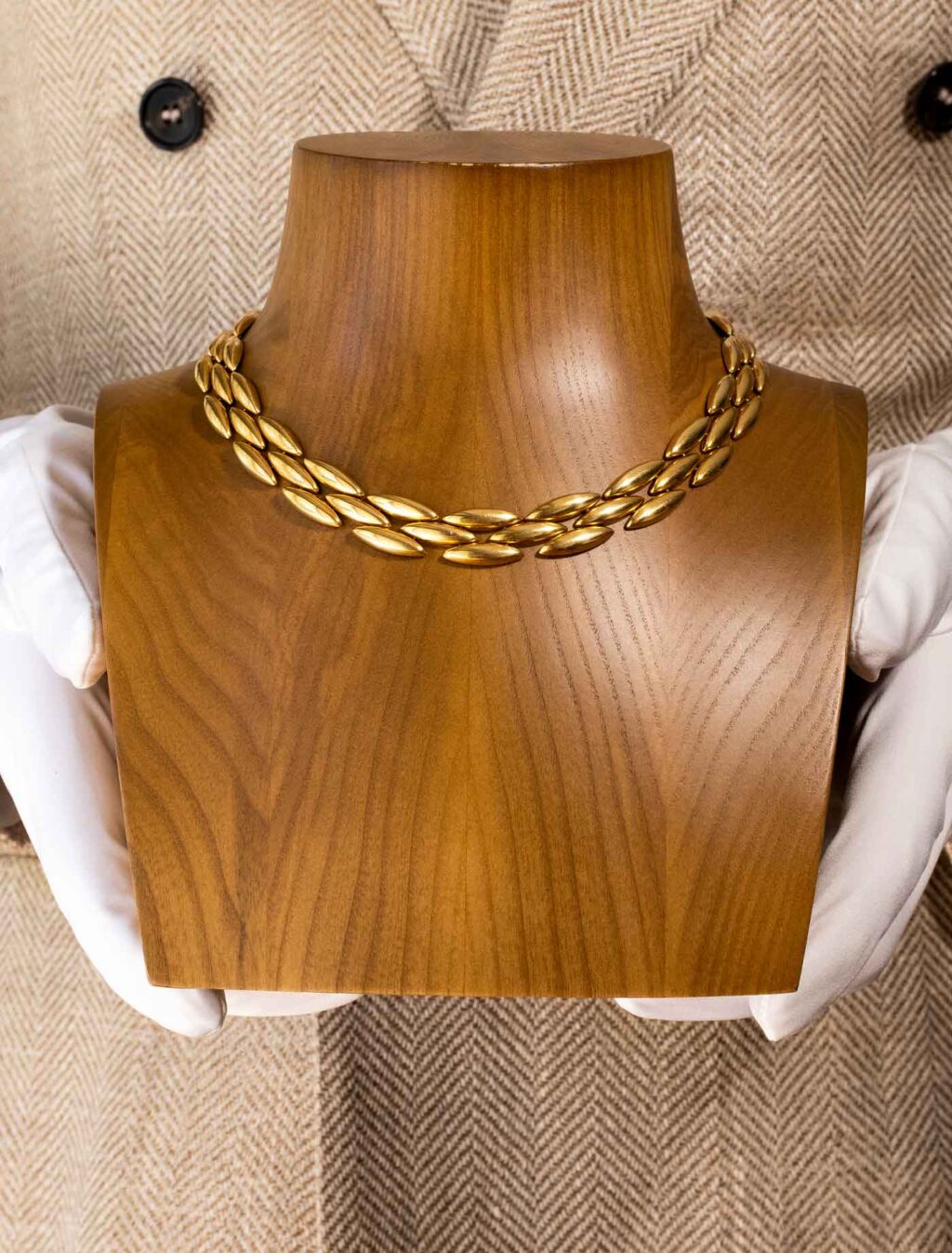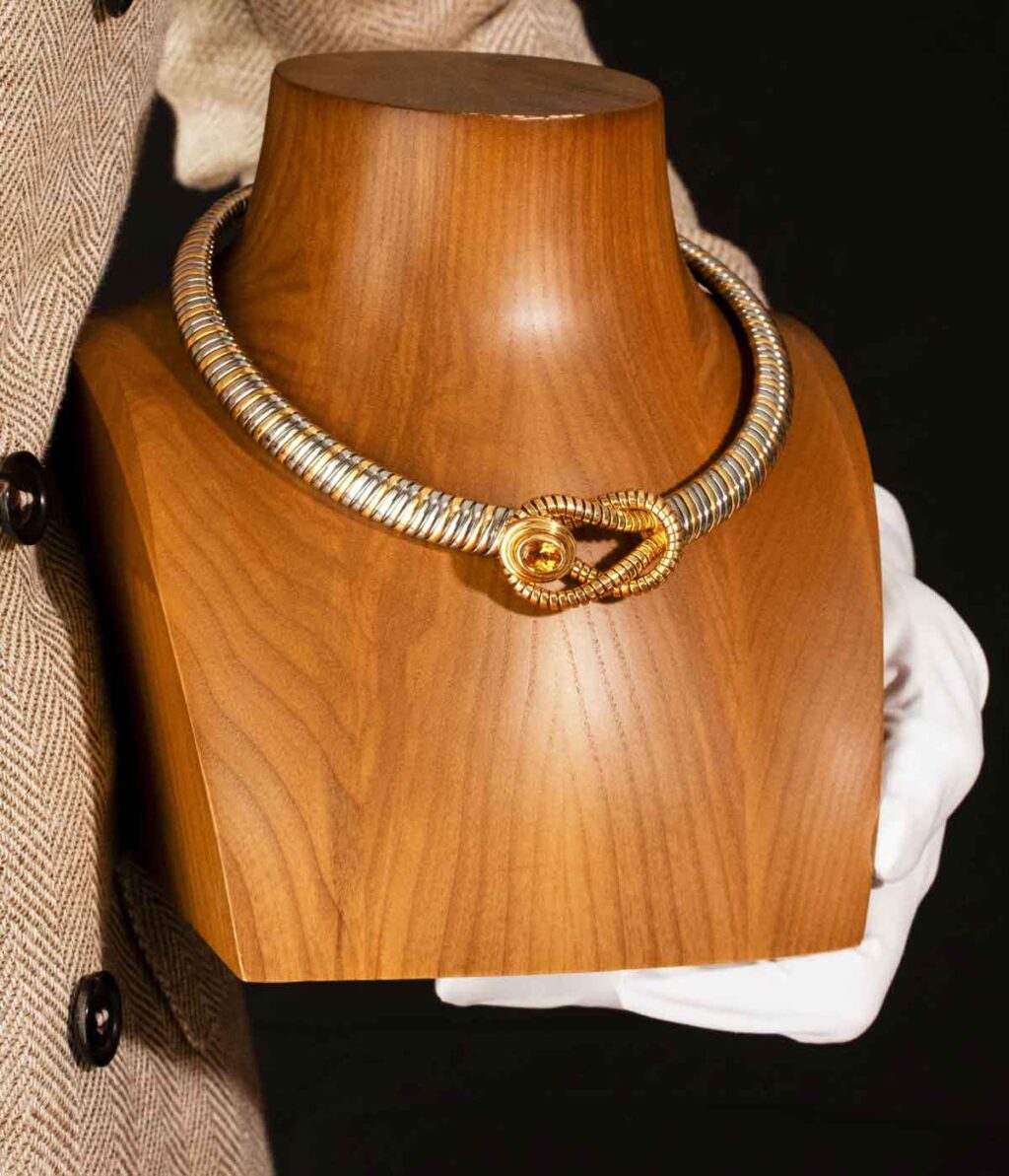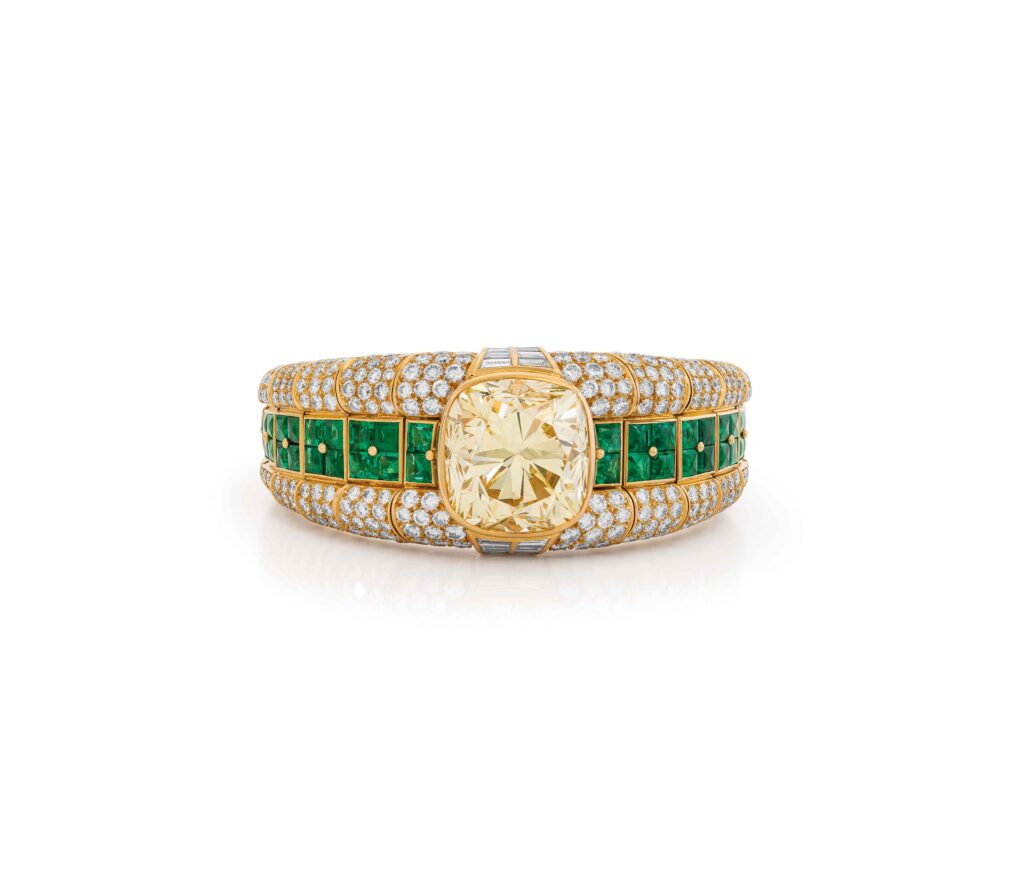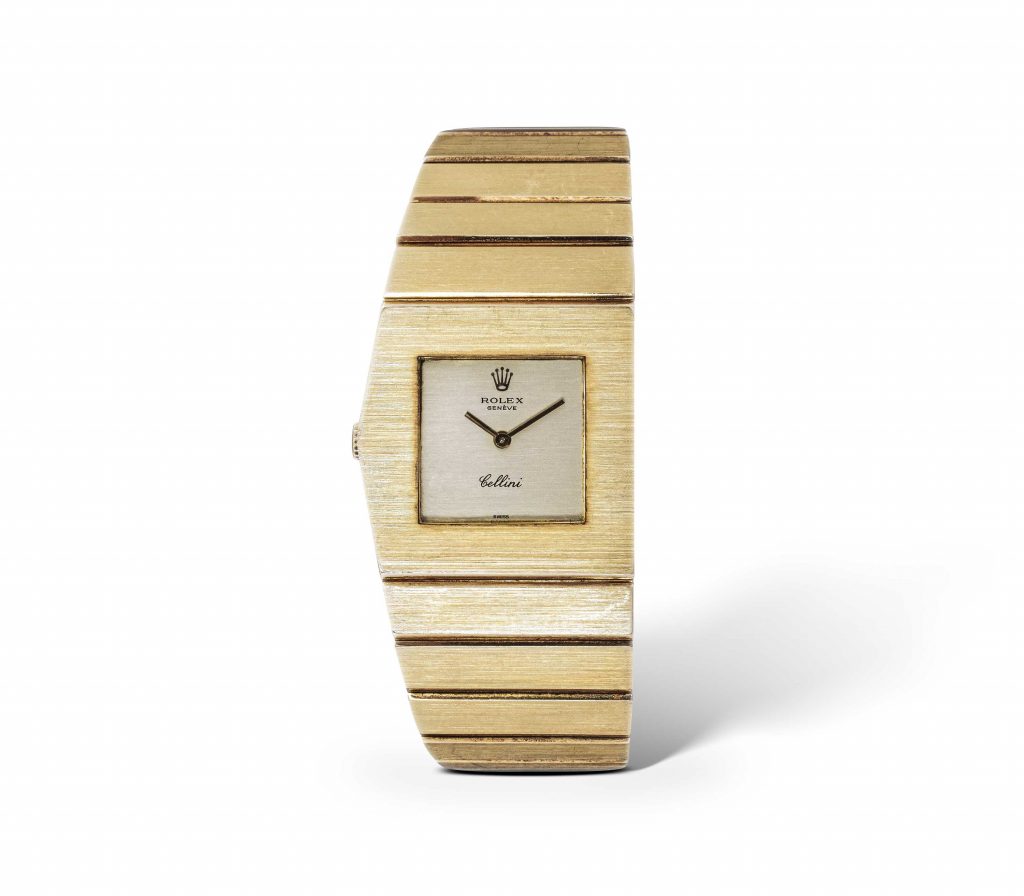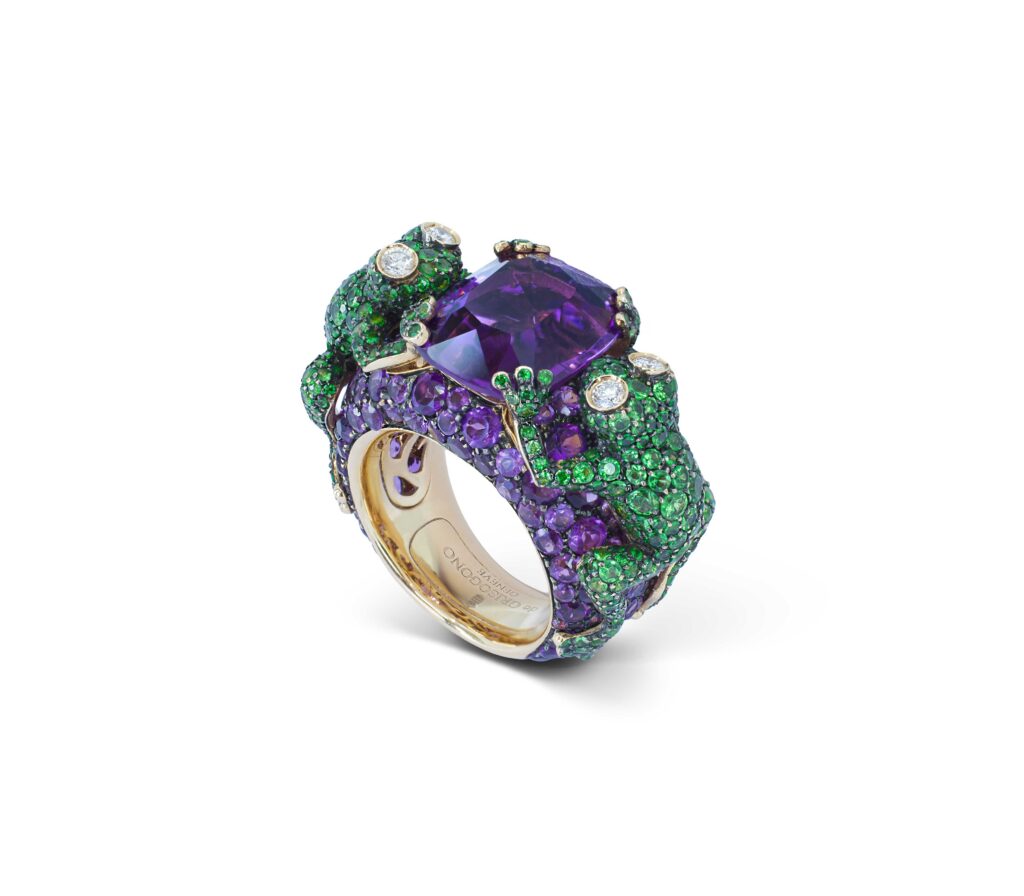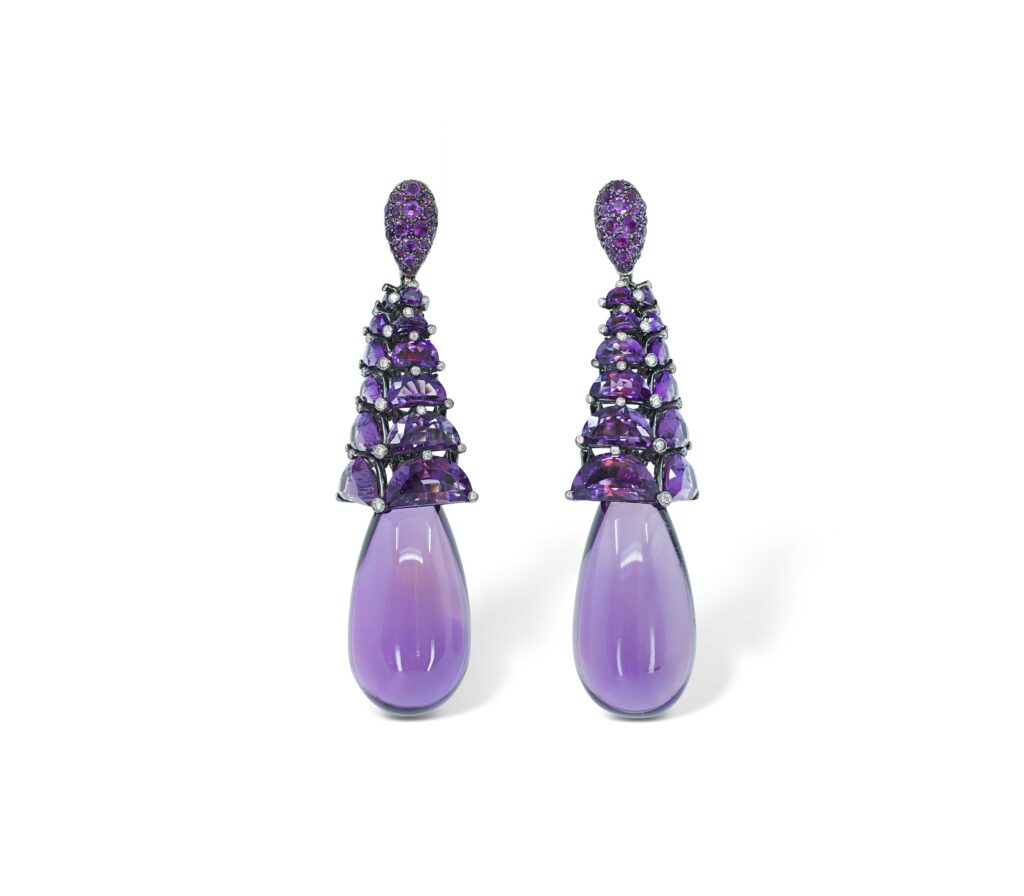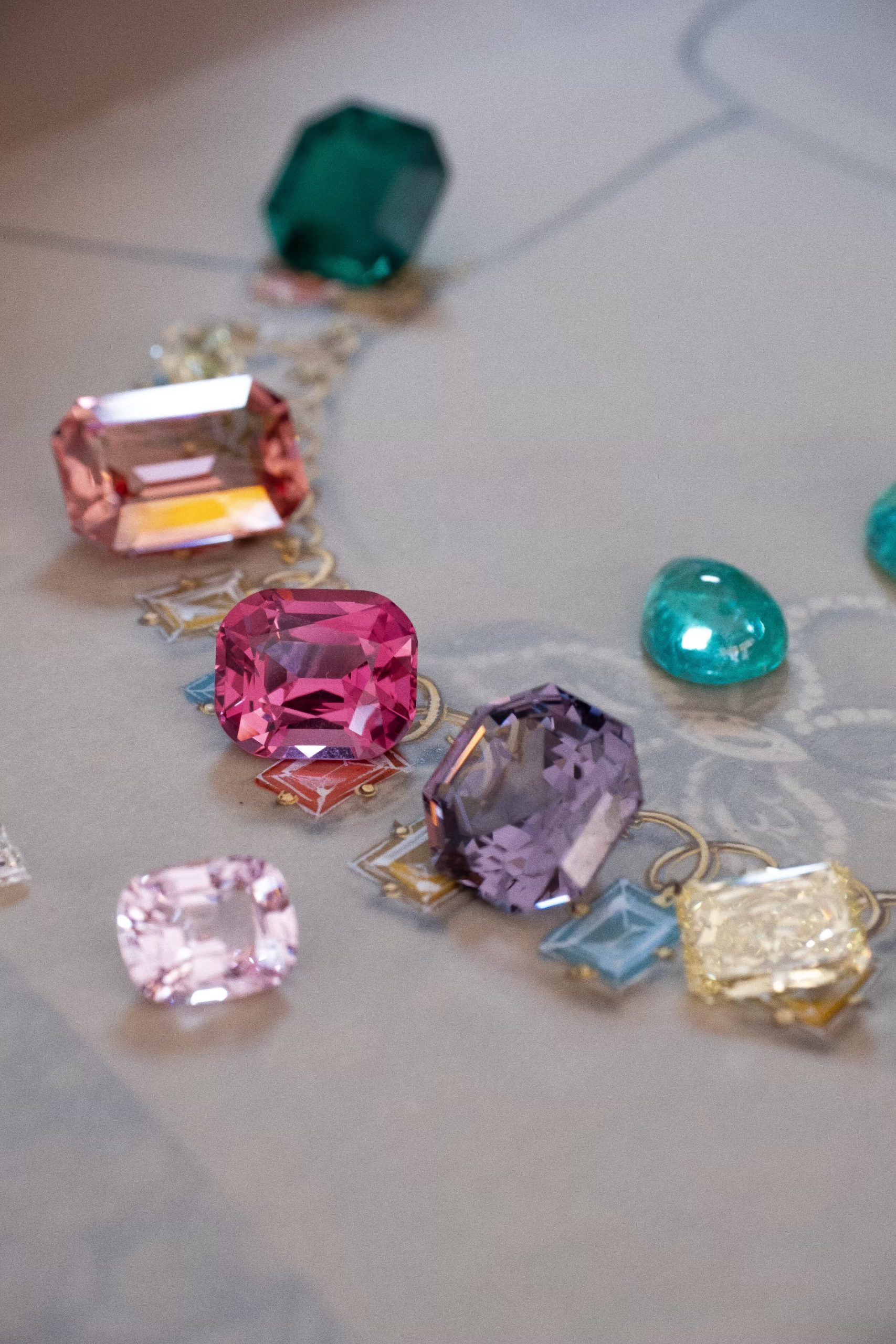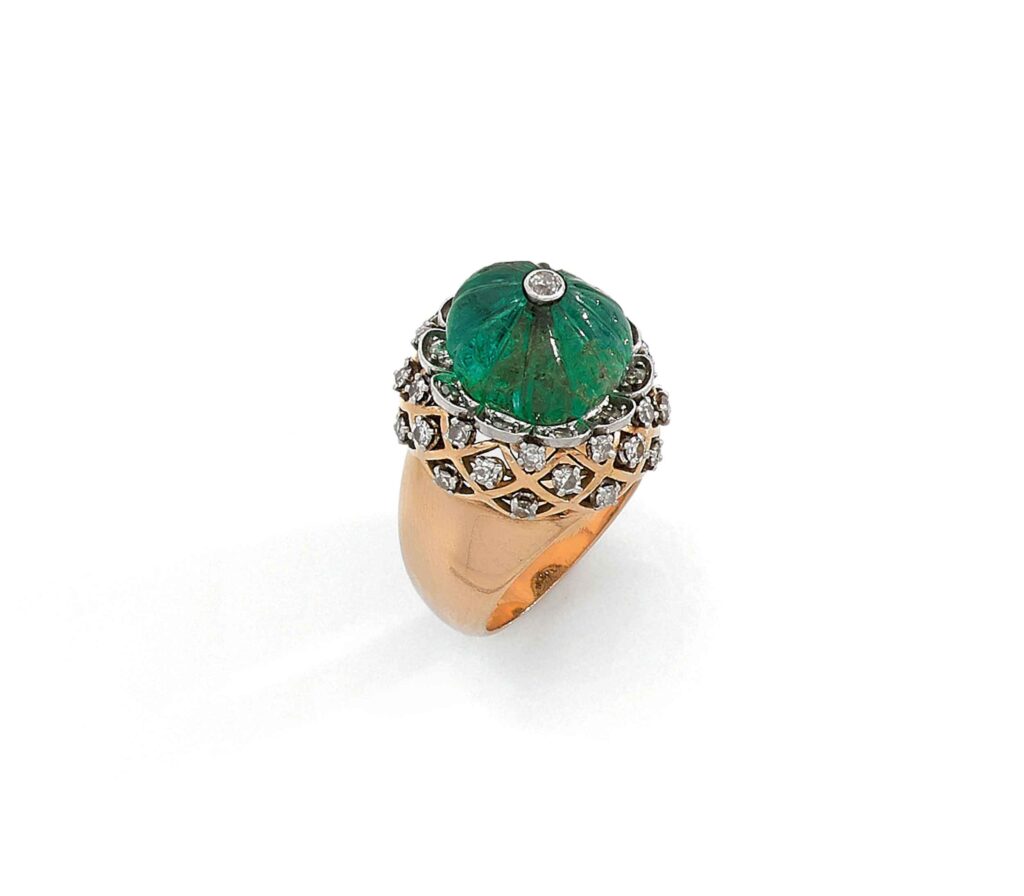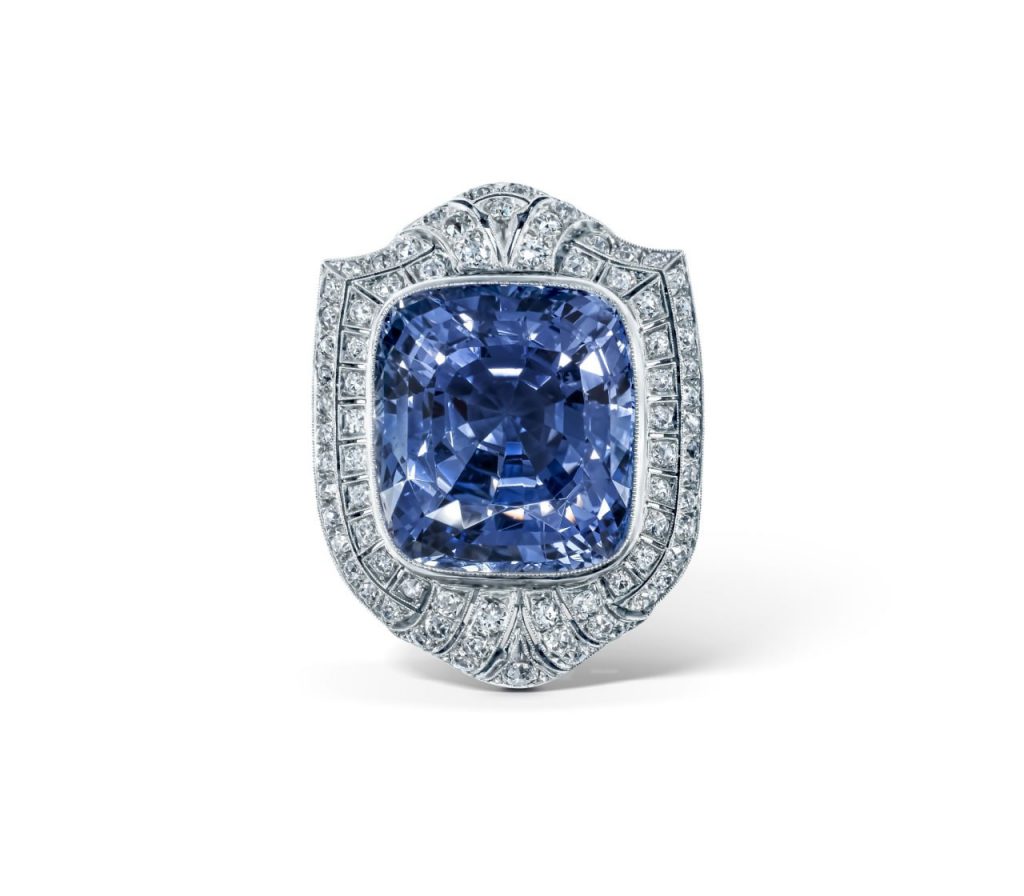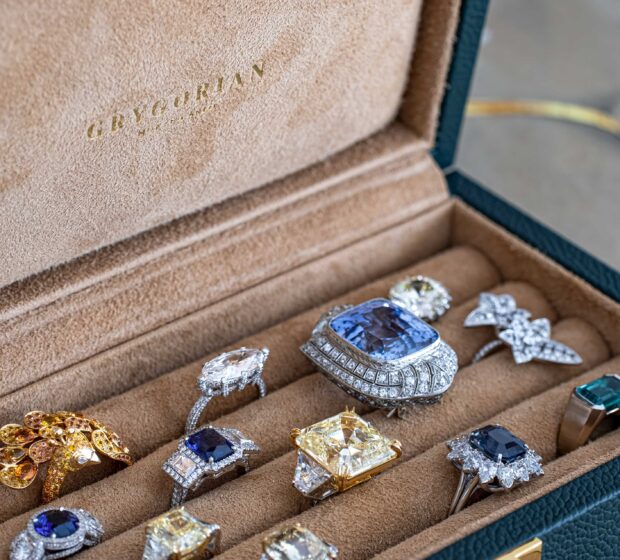Jewels that outlast their first owners carry something rarer than sparkle. They hold the cadence of a life well worn. The same ring that signed letters at a rosewood desk might later lift a champagne coupe in a city far from where it began. At Grygorian Gallery, this is our quiet obsession: not only the beauty of color and cut, but the gemstone resilience and stamina that lets a stone accompany a person through decades of celebration and routine. Some gems shrug off a century like a silk scarf. Others thrive with a slower rhythm and a gentler calendar. Knowing which is which helps a collector compose a life in gemstones that feel both intimate and enduring.
Durability, explained simply and precisely
When clients ask if a gem is “hard,” they usually mean “will it last.” Those are cousins, not twins. Durability rests on three separate qualities.
- Hardness: resistance to scratching. Measured on the Mohs scale from 1 to 10. Diamond anchors the top, talc the bottom. Hardness says whether a gem keeps its polish when it brushes against quartz dust in daily life.
- Toughness: resistance to breaking or chipping. A jade boulder can blunt a steel chisel. A diamond can chip at the edges if struck in the wrong direction. Toughness cares about shock and pressure.
- Stability: resistance to heat, light, and chemicals. Pearls dislike perfume. Kunzite loses color in strong sun. Opals can craze if they dry too quickly.
An ideal heirloom plays well in all three arenas, yet the real magic lies in knowing how each stone behaves and pairing it with the right setting, lifestyle, and courage.
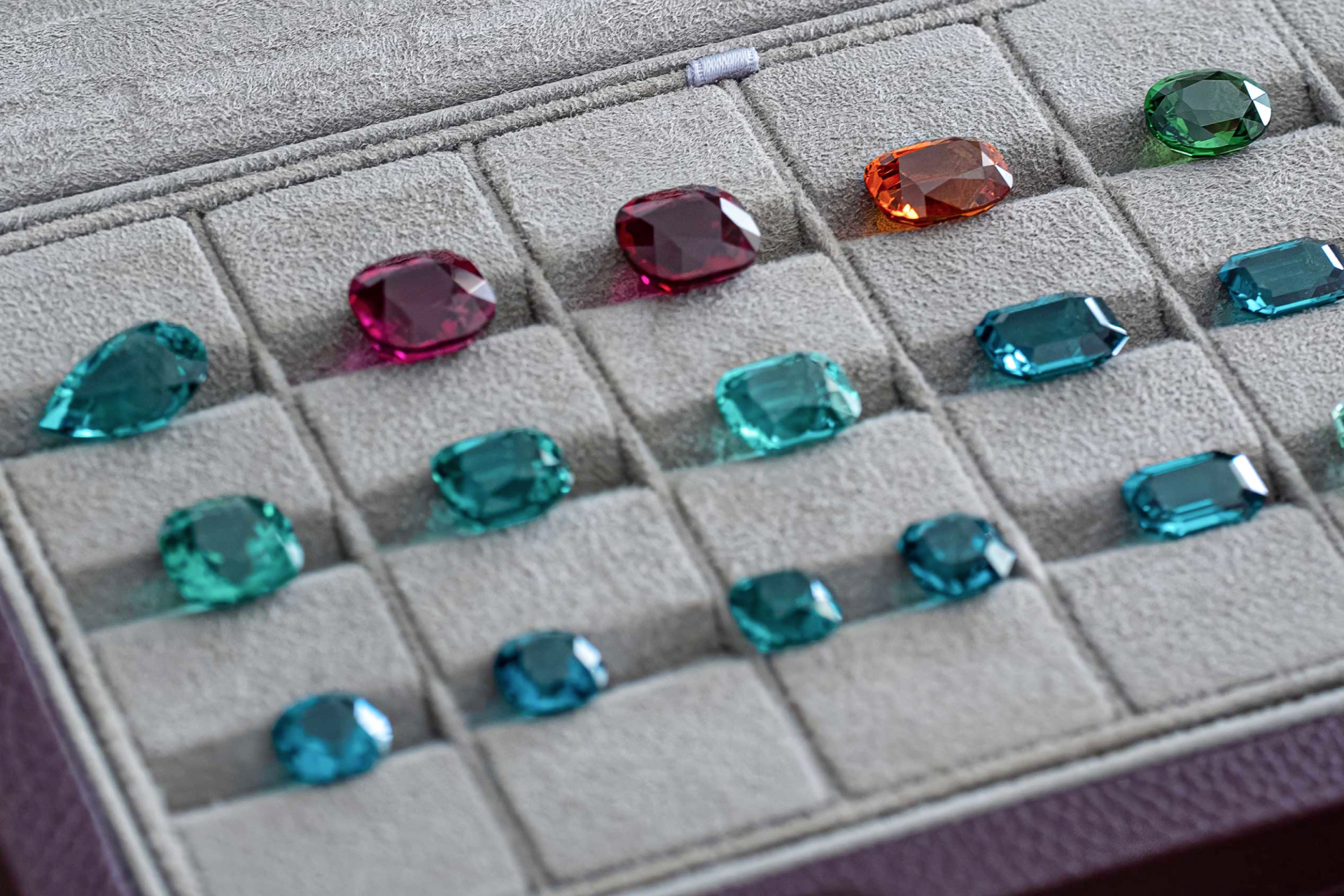
Why some gems look as fresh as the day they were set
Walk through a museum and count how many Roman intaglios in carnelian and sard reappear in perfect condition. Quartz varieties sit at 7 on the Mohs scale and hold a crisp polish for centuries, and those domed seals are protected by their very design, offering natural protection against wear. Medieval treasures often include spinels that nobles mistook for ruby. A spinel’s lack of cleavage and its excellent toughness allowed it to tolerate the roughest chapters of history. And look to Mughal-carved emerald leaves that still gleam with a satin depth. While emerald is tougher to wear in rings, carved pendants in protective settings have survived because their owners understood placement and care.
Even diamonds tell a story of resilience tempered with caution. Antique rose cuts carry charming bruises at their apexes, a reminder that the hardest material known to humankind still prefers even pressure and a thoughtful setting.
The true stalwarts of daily life
These gems can meet the pace of an active city day and still belong in the front row of evening light. They keep their polish, absorb the bumps of living, and tolerate cleanings that fit a practical schedule.
Diamond
Hardness 10, excellent polish retention, good stability. Toughness is only moderate to good, which surprises many. Diamonds have perfect cleavage in four directions and can chip if struck on a sharp girdle edge. Jewelers use protective settings for reason, especially in rings.
What diamond offers in real life is a serene confidence. It laughs at sandpaper and shrugs off quartz dust on a windowsill. A well-cut diamond paired with solid prongs carries the duties of an engagement ring effortlessly. Colorless diamonds typically handle ultrasonic cleaning. Heat exposure during routine work is tolerated when the stone is untreated and unflawed, although jewelers are careful with torch work. A diamond can burn if directly heated in a high-oxygen flame, so a trained hand matters.
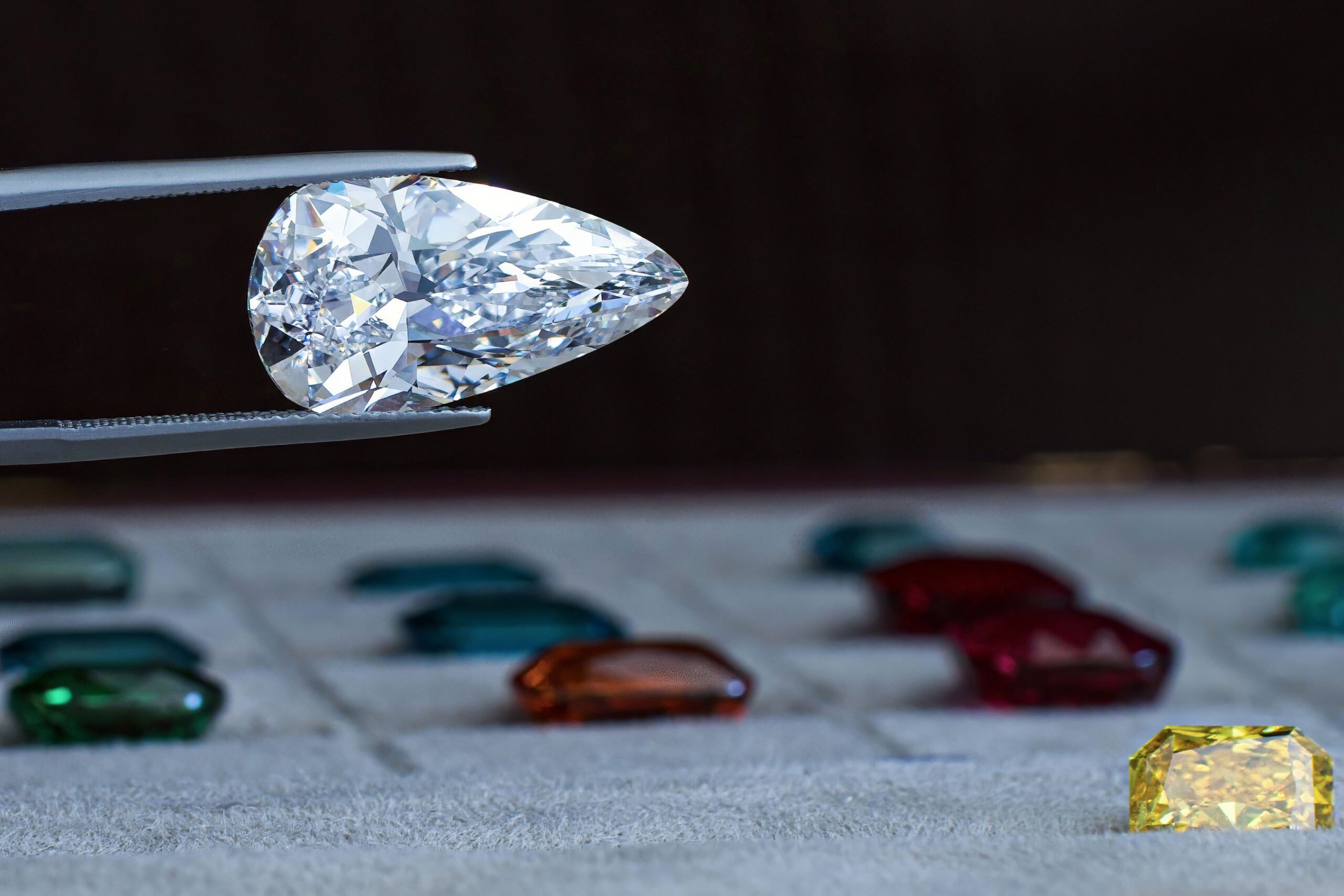
A note for collectors: Type IIa diamonds, free of nitrogen, are mirrored pools of clarity and often carry historical gravitas. They do not behave differently under wear, but their purity can show abrasions on a facet junction more readily, which makes attentive polishing a worthy indulgence every few decades.
Sapphire and Ruby
Corundum, in all its colors, sits at hardness 9 with very good toughness and no true cleavage. These stones are the canonical answer to an active wearer. Rococo rings to modern bezels, corundum tolerates nearly every routine stress, including heat, light, and standard cleaning.
- Blue sapphire. From velvety Kashmir to cornflower Ceylon to inky Australian, the body color does not affect durability. Some heat-treated sapphires have stable color. Avoid intense torch work on diffusion-treated stones.
- Ruby. Chromium’s glow repeats in every era of high jewelry. Rubies often carry silk inclusions that can improve their appearance, and these fibers add a hint of softness to the visual texture without changing durability. Lead-glass filled rubies should be handled with care since the infill can be damaged by heat and chemicals.
Corundum may be the closest thing to a long-term companion, especially in rings and bracelets that are frequently outstretched and bumped.
Spinel
Hardness around 8 with excellent toughness and no cleavage. Spinel is a darling of connoisseurs who appreciate color clarity, quick fire, and a stoic attitude toward daily life. From neon pink to steely lavender, spinel whistles in the hand like a well-tuned instrument.
History gives spinel an extra patina. For centuries it masqueraded as ruby in crown jewels. The Black Prince’s “ruby” in the Imperial State Crown is spinel, still intact after ceremonial wear, storage, and reopening across generations. Under magnification, octahedral crystal remnants sometimes appear, a charming nod to its cubic crystal system and to its durability in the rough.

Chrysoberyl and Alexandrite
Chrysoberyl rests at hardness 8.5 with excellent toughness, one of the best combinations in gemology. A classic yellow-green chrysoberyl in a tight bezel will outlast fashions by decades. The color-change variety, alexandrite, adds a lyrical shift from green to red under different light sources, but the resilience remains the same. Both stones handle ultrasonic cleaning and careful heat, although prolonged high temperatures can cause polish to soften at facet junctions.
For daily wear, few stones reward commitment like chrysoberyl. It can be re-polished to a razor edge even after long stretches of use, and it resists chipping far better than many gems rated harder on Mohs.
Jadeite and Nephrite
Perhaps the most misunderstood category. Mohs hardness is modest, yet toughness is legendary. The interlocking fibrous structure of jade absorbs shock that would shatter many minerals. Imperial jadeite bangles hand down through generations precisely because they tolerate a life of movement. They can still chip if struck sharply on a thin section, and they do not enjoy contact with harsh acids or high heat, but the day-to-day impact resistance is unmatched.
A note for purists: some jade is impregnated with polymers or dyed. Untreated jadeite with a fine grain and even texture brings a tactile reassurance that belongs in the pantheon of daily-wear jewels.
The center line: confident, with a little mindfulness
These stones keep up well with offices, dinners, and weekends, as long as they avoid repetitive hard knocks or careless cleaning. They carry color that stops conversations and still behave practically.
Garnet family
Garnet is not one gem, but a family with hardness around 6.5 to 7.5 and fair to good toughness, no cleavage, and beautiful polish. Almandine and pyrope blend into rich reds, while tsavorite, a grossular garnet, pioneers the most springlike green imaginable. Demantoid’s dispersion creates a lively flash that rivals diamond.
Garnets prefer to skip ultrasonic cleanings when they have included fibers or healed fissures. Demantoid’s horsetail inclusions are a sign of Ural origin and a hallmark of beauty, not a structural flaw, yet it pays to treat them gently. Set in pendants or earrings, garnet is untroubled. Rings are viable with care.
Tourmaline
From vivid indicolite blues to bi-color watermelon and electric Paraiba hues, tourmaline offers one of the most varied palettes in the cabinet. Hardness sits around 7 to 7.5, toughness is fair to good, and it has no true cleavage but can be brittle along growth tubes.
Tourmaline tolerates daily wear in protective settings. Some stones show pleochroism that shifts color when viewed from different directions, and a skilled lapidary aligns this with the table for best effect. Heat can shift color in a few varieties and may cause inclusions to expand, so jewelers keep torch work away from stones during repairs.
Quartz: amethyst, citrine, smoky, rock crystal
Quartz anchors the middle of Mohs hardness at 7. It takes a mixed polish on soft metals and often looks happiest in larger, sculptural forms. Amethyst can fade in prolonged direct sunlight, a gentle reminder to rotate display trays and to store pieces away from windows. Rock crystal carvings from Art Deco maisons show just how enduring quartz can be when treated as sculpture in protective settings.
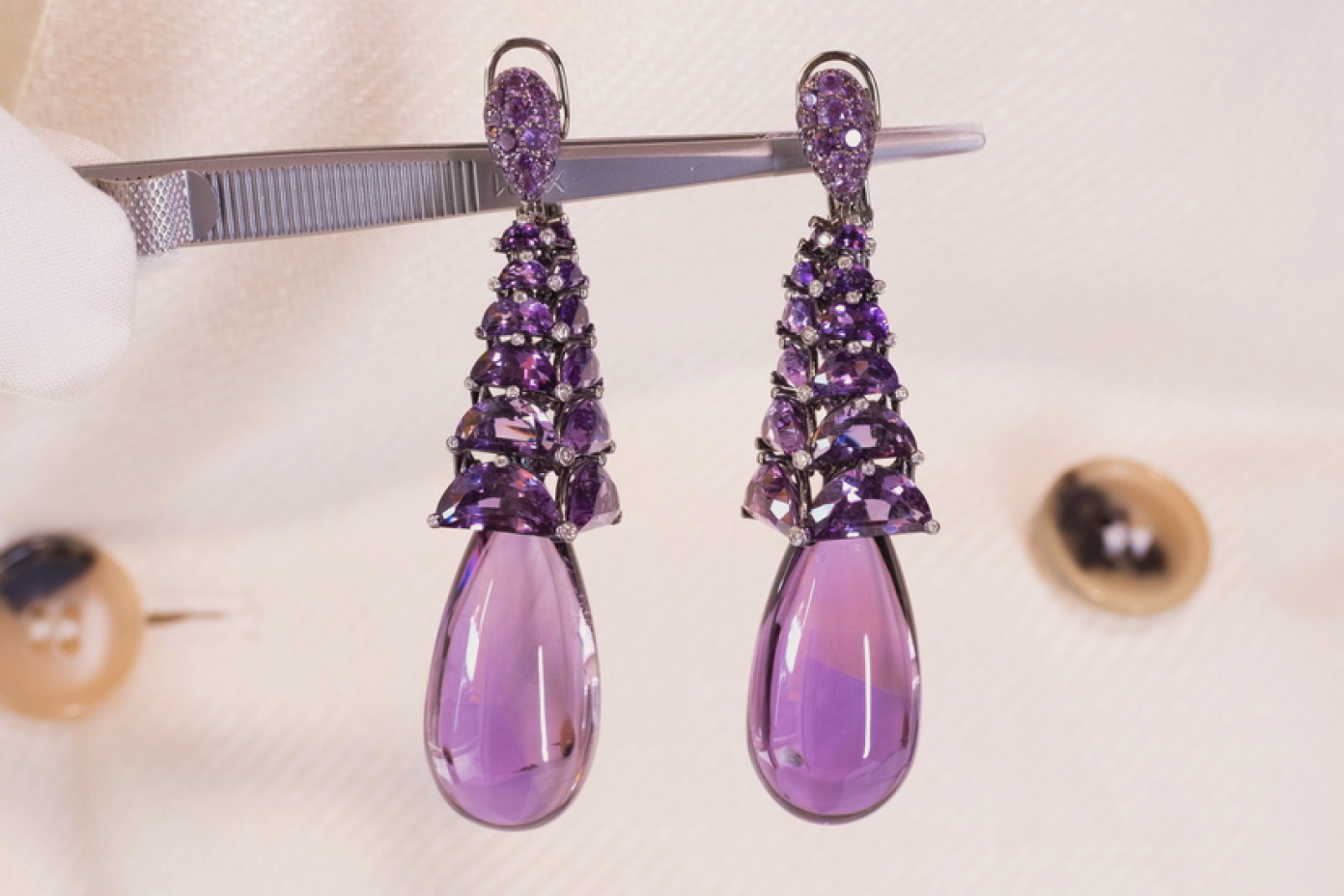
Aquamarine and the other beryls
Aquamarine, morganite, heliodor, and the beryl family without emerald’s garden are hardworking gems. With hardness 7.5 to 8 and good toughness, they handle office life and events with grace.
- Aquamarine wears like daybreak and favors simple, architectural cuts that emphasize clarity.
- Morganite’s peach glow pairs well with rose gold and modern bezels. Its color is often stable, but prolonged sun on pale stones can lighten the tone, so storage out of direct light is smart.
- Heliodor leans toward golden, quietly strong in daily wear.
These gems accept ultrasonic cleaning when free of significant fissures and respond well to a periodic repolish, returning to crystalline sharpness.
Zircon
Do not confuse natural zircon with cubic zirconia. Zircon is a natural gemstone with remarkable fire and a classic place in antique jewelry. Hardness ranges from about 6 to 7.5 depending on whether the crystal has experienced radiation damage in nature. Some zircons are quite brittle, so they appreciate bezel settings and careful cleaning. Its birefringence can make facet junctions seem doubled under magnification, an optical personality trait rather than a flaw.
The lyrical beauties that ask for gentler schedules
These are the poets in a collection. They reward patience with color that feels almost alive, yet they prefer a softer life. Many are best suited to pendants, brooches, and earrings, or to rings worn on evenings that have already put away the garden shears.
Emerald
Beryl filled with chromium or vanadium carries a pulse that no other green can match. Hardness is a respectable 7.5 to 8, but natural emerald is often fractured. The network of internal fissures, the jardin that gives each stone character, reduces toughness. Oil or resin filling is common to improve clarity. Ultrasonic and steam cleaners can disturb that filler and may widen fractures. Emeralds should avoid sudden temperature swings.
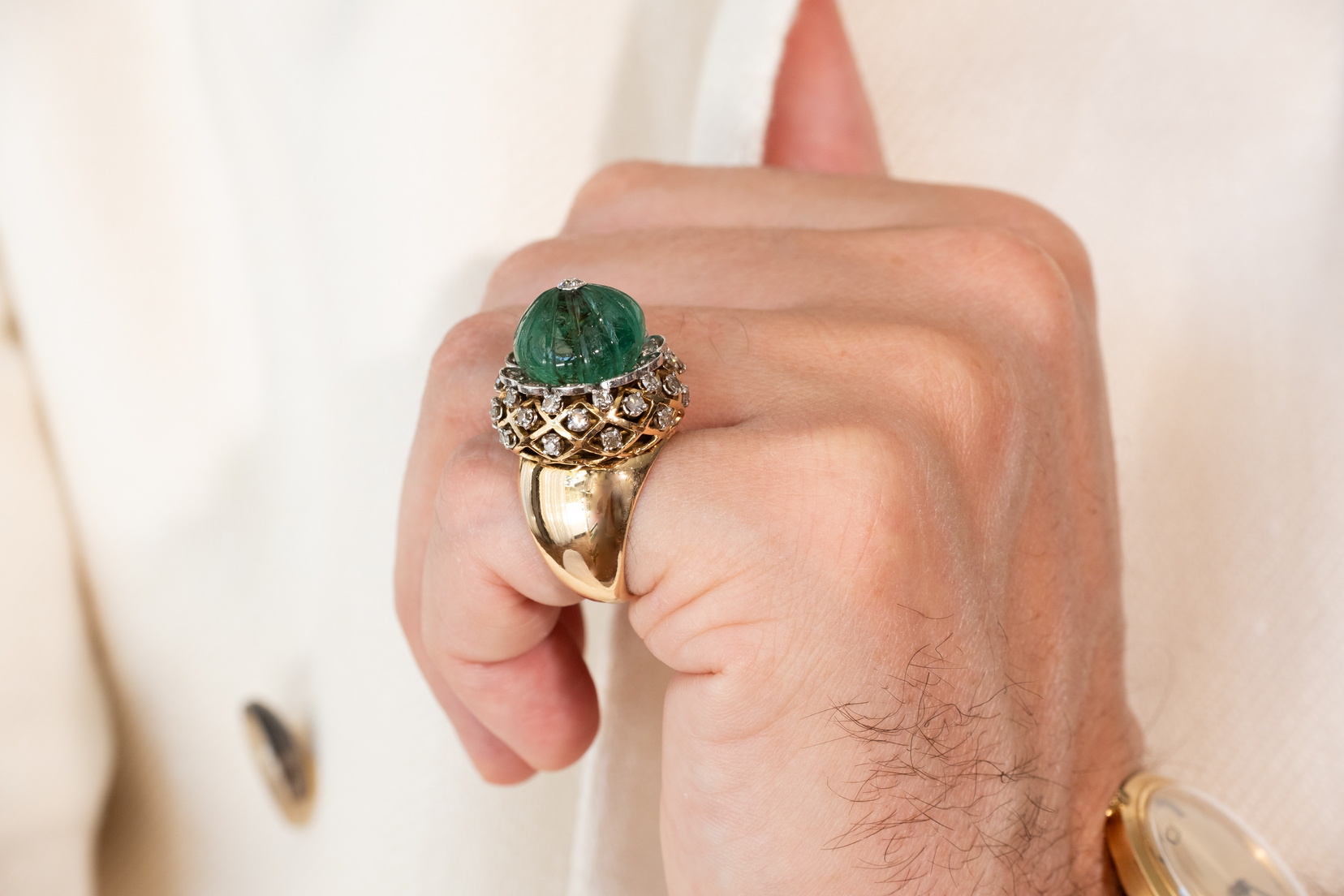
Despite this, Colombia’s finest stones and historic Indian carvings stand as proof that emerald can cross centuries in protective settings. A bezel with a full closed back would be a friend here, and an owner who takes off the ring before a gym session is equally helpful.
Opal
A living micro-mosaic of silica spheres and water, opal changes with its environment. It carries moisture, so rapid dehydration can produce crazing, a cobweb of cracks that scatters its play of color. Hardness sits around 5.5 to 6.5, and toughness is low. Avoid prolonged low humidity and avoid sealed hot safes.
Solid opals fare better than doublets and triplets, where a thin slice is laminated to a backing. Those composites can delaminate in hot water or under steam. Gentle wipe-downs and storage in a soft pouch with ambient humidity keep opal happiest. Antique opal rings often show intact play of color because their owners wore them as evening jewels and stored them in well-loved boxes.
Pearl
Organic, tender, timeless. Pearls have low hardness, around 2.5 to 4, yet decent toughness in strand form. They are resilient when cared for properly, and they soften every face they frame. Pearls dislike acids and brighteners. Perfume, hairspray, and even perspiration can erode nacre over time. Always put pearls on last, take them off first, and wipe with a soft cloth before they return to their case. Knotting between pearls prevents abrasive contact and secures the strand if it breaks. Re-stringing once a year for frequently worn strands is a ritual worth keeping.
Tanzanite
Zoisite turned violet-blue by heat treatment, tanzanite is one of the more modern gemstones to capture hearts. Hardness sits between 6 and 7. It shows one direction of cleavage and has fair to poor toughness. It should not go into ultrasonic cleaners. Avoid sudden temperature changes and sharp impacts. In earrings and pendants, tanzanite lights up the face. In rings, a protective bezel and moderated wear are wise.
Topaz
A tough paradox. Hardness is 8, but topaz has perfect cleavage, which makes it susceptible to chipping or splitting if hit in a particular direction. It belongs in rings protected by bezels or low-profile settings and prefers to skip ultrasonic cleaning. Imperial topaz in burnt orange and pink is an aristocrat of color. Blue topaz seen widely in modern jewelry is often irradiated and heated to achieve its hue, which is stable under normal wear.
Kunzite
A pastel heartbreaker. Kunzite belongs to the spodumene family and has perfect cleavage in two directions. It also fades with long exposure to bright sunlight. The color is usually a gift for evenings or soft light. Store it away from windows. It should avoid heat and ultrasonics, and it looks best in designs that protect the stone from direct knocks.

Turquoise and Lapis Lazuli
Turquoise is porous and usually measures between 5 and 6 in hardness. Many stones are stabilized with resin to improve durability and color. Untreated turquoise can absorb oils and darken, becoming more personal to the wearer but losing the vivid sky tone. Lapis, an aggregate centered on lazurite with calcite and pyrite, sits around 5 to 5.5 in hardness. Both dislike acids and cleaning solutions. Warm soapy water, brief immersion, and a soft cloth are enough.
Peridot
The gem of volcanic origins that looks like a lime split open under sunlight. Hardness reaches 6.5 to 7, but toughness is only fair. It has two directions of cleavage and a sensitivity to sudden heat changes. Peridot rings do best with rounded designs that protect edges and with occasional wear.
Settings, metals, and the quiet ways design protects a gem
Resilience, akin to inner strength, is not solely a property of the stone. The architecture of a jewel decides how forces travel through a piece.
- Bezel settings create a protective rim that shields girdles from knocks. Perfect for fragile or cleaved gems.
- Prongs maximize light but invite snagging and concentrated force on small points. They work beautifully for diamond and corundum, and still serve softer gems if the ring sits low.
- Halo designs can guard a center stone from direct hits. Smaller outer stones take the first contact.
- Closed backs shield the underside but can trap moisture. Foiled-back Georgian pieces sing with light but should avoid water entirely.
- Metal choice matters. Platinum has higher density and work hardens under hammering, which gives prongs better memory on long wear. Gold offers a warm luster and pleasing wear on skin, and higher karats are softer.
If you enjoy stacking bands, consider that diamond melee can abrade an adjacent sapphire over years of friction. A thin spacer band in plain metal keeps peace between neighbors.
How vintage practice informs modern care
Antique jewels teach resilience from experience.
- Georgian and early Victorian diamonds were often set in silver over gold to brighten the stones. Silver tarnish can creep under prongs if left unchecked, and foiled backs should never be immersed in water.
- Paste jewels, glass set with foils, were and remain beautiful. They require the gentlest care and dry cleaning methods only.
- Victorian jet and Whitby jet, carved with lace-like delicacy, scratch easily and respond to soft cloths only. They are a reminder that not every cherished jewel is a daily wearer, and that is part of their power.
- Art Deco rock crystal plaques still look fresh because the designs were bold and the settings, often in platinum, held them securely.
Studying how these pieces were used and serviced gives a playbook for new commissions that respect the material at hand.
Treatments and their impact on longevity
Many gems are improved by human touch. Knowing which treatments your stone carries helps you care for it intelligently.
- Heat treatment. Common for sapphire, ruby, and tanzanite. Typically stable, though prolonged high heat during repair can alter a stone. Jewelers remove stones during torch work whenever possible.
- Irradiation. Used to create blue topaz and intensify some tourmalines. Normally stable in jewelry wear. Some colors fade with intense sun exposure, which is easily avoided through normal storage.
- Oil and resin filling in emerald. Fills surface-reaching fissures and improves clarity. Should not be cleaned ultrasonically or steamed. Re-oiling by a skilled gemologist can refresh the look over decades.
- Lead-glass filling in ruby. Creates a smooth surface appearance but reduces thermal and chemical resistance dramatically. Handle with caution and avoid heat, acid, and ultrasonics.
- Diffusion. Introduces color-causing elements into a corundum’s surface. Color resides near the surface, so deep scratches can reveal lighter color below.
- Stabilization in turquoise. Resin impregnation improves durability and reduces porosity. Stabilized material is often better for daily wear.
A trustworthy seller will share treatments openly. In our ateliers, setters also adapt techniques to treatments, using cool micro-flame or hand pressure when a stone asks for it.
Cleaning rituals that honor craft and material
A well-kept jewel looks confident, even in quiet light. The simplest routines are often the best.
What to do at home
- Use lukewarm water, mild dish soap, and a soft toothbrush. Rinse well and pat dry with a lint-free cloth.
- For diamond, sapphire, ruby, spinel, and chrysoberyl, a small ultrasonic cleaner used briefly can be safe for untreated, stable stones.
- Wipe pearls with a soft cloth after each wear, store flat, and restring regularly.
- Store opal, emerald, and tanzanite away from heat sources and bright windows.
What to avoid
- Bleach, acetone, and strong cleaners. These can erode alloy in gold and attack organic gems.
- Steam and ultrasonic on fragile stones, fracture filled stones, and anything with obvious fissures.
- Sudden temperature changes. Moving from cold to very hot water can stress many gems.
Make it a habit to take off rings during weight training, rock climbing, and heavy gardening. Your hands will thank you as much as your jewels.
When life leaves a mark
A chip on a diamond’s girdle is not the end of its story. Precision recutting can erase decades of wear with a change barely visible to the naked eye. Sapphires can be repolished to sharpen facet junctions. Emeralds can be cleaned and re-oiled properly, restoring their glow. Pearls can be matched and replaced in strands without losing the strand’s rhythm. These rituals are part of an heirloom’s biography.
Watches and the language of durability
Vintage watches in our collection make the same argument in a different dialect. Sapphire crystals, now common, resist scratches admirably, similar to sapphire in jewelry. Acrylic crystals scratch easily but can be buffed, a reminder that hardness and repairability are separate conversations. Cases and bracelets show how metals age with grace and how micro-abrasions become a gentle patina rather than damage. The lesson carries back to rings and bracelets. Design and service define how material properties translate to real life.
A quick guide to resilience profiles
The table below offers a shorthand reference. Every stone has exceptions, and setting style changes the calculus, yet this snapshot helps you decide which pieces belong on a long-haul packing list and which deserve a special occasion.
| Gemstone | Mohs Hardness | Toughness | Cleavage | Heat Sensitivity | Light Sensitivity | Chemical Sensitivity | Notes for Wear |
|---|---|---|---|---|---|---|---|
| Diamond | 10 | Fair to Good | Perfect | Moderate | Low | Low | Resist scratches, protect edges from blows |
| Sapphire/Ruby | 9 | Very Good | None | Low to Moderate | Low | Low | Ideal daily wear, watch for diffusion or filled stones |
| Spinel | 8 | Excellent | None | Low | Low | Low | Vintage favorite, robust in rings |
| Chrysoberyl | 8.5 | Excellent | None | Low | Low | Low | Alexandrite shares the same resilience |
| Jadeite/Nephrite | 6 to 7 | Exceptional | None discernible | Low | Low | Moderate | Absorbs shock, avoid acids and extreme heat |
| Garnet | 6.5 to 7.5 | Fair to Good | None | Low | Low | Low to Moderate | Demantoid prefers gentle cleaning |
| Tourmaline | 7 to 7.5 | Fair to Good | None | Moderate | Low | Low to Moderate | Avoid hard knocks, beware of brittleness along growth tubes |
| Aquamarine | 7.5 to 8 | Good | Poor | Low | Low | Low | Strong option for daily wear |
| Quartz | 7 | Fair | None | Low | Moderate | Low | Amethyst can fade with prolonged sunlight |
| Zircon | 6 to 7.5 | Poor to Fair | Weak | Moderate | Low | Low to Moderate | Use bezels, gentle cleaning |
| Emerald | 7.5 to 8 | Poor to Fair | Poor | Moderate | Low | Moderate | Oil or resin filling common, avoid ultrasonic and steam |
| Opal | 5.5 to 6.5 | Poor | None | High | Moderate | Moderate | Avoid dehydration and heat, gentle wipe only |
| Pearl | 2.5 to 4 | Fair | None | High | Low | High | Avoid chemicals, restring regularly |
| Tanzanite | 6 to 7 | Poor | Perfect one direction | High | Low | Moderate | No ultrasonic, protective settings |
| Topaz | 8 | Poor to Fair | Perfect | Moderate | Low | Low | Bezel settings recommended, avoid sharp blows |
| Kunzite | 6.5 to 7 | Poor | Perfect | High | High | Moderate | Evening wear, store away from sunlight |
| Turquoise | 5 to 6 | Fair | None | Moderate | Low | High | Often stabilized, avoid oils and solvents |
| Lapis Lazuli | 5 to 5.5 | Fair | Poor | Moderate | Low | High | Gentle care, avoid acids |
| Peridot | 6.5 to 7 | Fair | Distinct | Moderate | Low | Moderate | Protect edges, avoid thermal shock |
Rings, bracelets, and how movement affects stress
Not all jewelry experiences the same weather. Rings and bracelets see the most stress. They collide with door handles, carry groceries, and meet tablets and keyboards repeatedly. Earrings and pendants lead calmer lives, protected by gravity and distance.
For stones with poor toughness or cleavage, moving them to the ear or neck is like moving a house plant to a brighter but gentler window. Kunzite becomes a marvelous pendant. Tanzanite glows in a necklace and looks ageless after decades. Emeralds in earrings sparkle without courting danger.
This simple choice of placement often matters more than any other decision once the stone is selected.
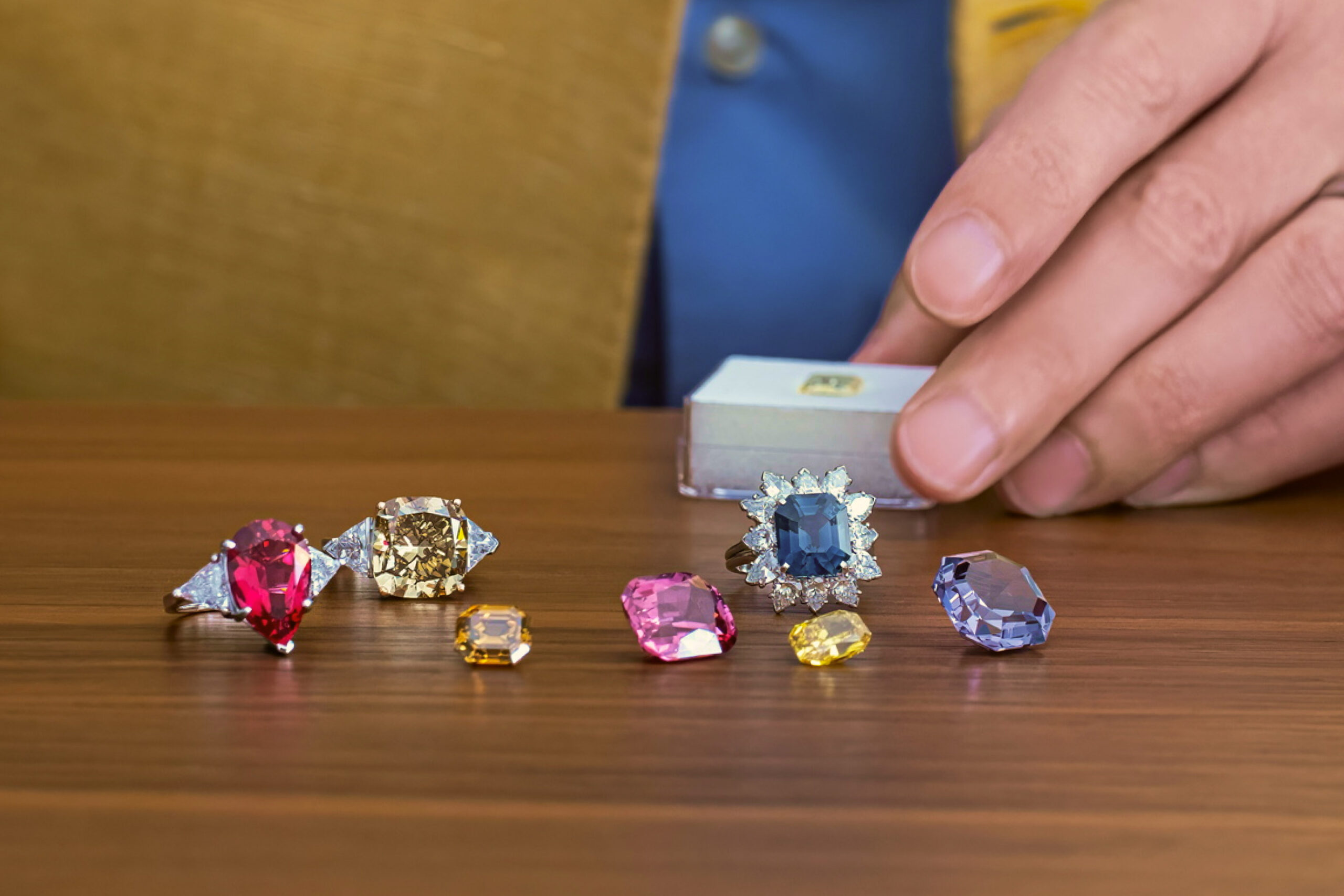
Storage and travel
The jewel box is a stage. Treat it as such.
- Separate compartments or soft pouches keep hard stones from abrading softer neighbors.
- Avoid direct sunlight in storage, which can fade certain gems.
- A tiny humidity source in a safe, like a soft piece of dampened cotton sealed nearby and replaced regularly, can keep opals content. Do not enclose opals with silica desiccants.
- Carry jewelry in a travel case with individual slots. Remove rings before airport security trays where grit and metal edges wait.
A few counterintuitive truths
- The hardest gem is not the toughest. Diamond out-scratches jade, yet jade handles impacts far better.
- High karat gold is softer than alloy-heavy lower karat gold, yet it often shows a nicer patina under daily wear. Strength can be a conversation about behavior, not just hardness.
- Many of the most celebrated gems in history needed careful wear. The Cartier Tutti Frutti bracelets set carved emeralds and rubies in protective bezels that let fragile treasures sing.
- Setting height matters. The lower a ring sits, the fewer direct knocks it takes. Height is a style statement, but it is also an engineering choice.
Heritage echoes and scientific footnotes
Corundum’s trigonal crystal structure resists cleavage and lends sapphire and ruby their forgiving nature under stress. Spinel’s cubic structure and absence of directional weakness make it a stalwart. Beryl’s hexagonal channels host trace elements, which give aquamarine its blue and emerald its green, and those same channels can intersect with natural fissures that need support. Tanzanite’s orthorhombic structure introduces uneven powdery planes under shock that explains its cleavage.
Opal’s structure is not crystalline at all, but an orderly array of spheres. The rainbow you see is diffracted light. That order depends on delicate spacing, and it can change if water leaves too quickly. This is why museums maintain controlled environments for opal-rich displays.
Pearl is calcium carbonate layered with conchiolin, organic-laden and tender to acids. Vinegar can eat through a pearl. A city’s air can dry a strand if it sits out on a dresser for months. Yet pearl responds nobly to respectful wear. Skin oils condition the nacre, making them one of the few gems that may look better with appropriate use.
Shopping with resilience in mind
Start with your habits, not with a ranking sheet. A desk-bound professional who cooks at home and lifts weights twice a week has different needs than a sculptor who spends afternoons in a studio. Rings and bracelets crave the sturdier stones. Pendants and earrings open the field to delicate hearts.
Consider the design. A diamond in a slim prong solitaire is classic and durable, yet your daily life might welcome the same diamond in a bezel. A halo around an emerald not only glows, it also absorbs glancing blows meant for the center stone.
Treatments are part of reality. Ask, listen, and match your care to what you learn. A well-treated stone that suits your habits can outlast a rarer untreated gem handled unwisely.
For color inspiration and to see how different species look in curated settings, visit our colored stones catalogue.
Appointments, service, and the beauty of maintenance
A jewel is a mechanical object. Prongs loosen. Clasps wear. It is an act of respect to bring a ring for inspection and cleaning once a year. We check under magnification for chipped girdles, lifted prongs, and gemstones that would appreciate a kinder setting. Emeralds can be gently cleaned and re-oiled when needed, returning a mossy glow. Pearls can be restrung in a day. Diamond rings with years of micro-abrasion can be polished to return that crisp luster.
Sometimes the right answer is a subtle redesign. A slightly thicker bezel on a treasured tanzanite can extend its life by decades without changing its look. A discreet platinum insert inside a gold shank can help a ring keep its shape. This is how craft and science meet the rhythms of daily life.
A collector’s small lexicon
- Abrasion: minute wear on facet junctions that blurs the crisp line. Common on diamonds that have seen hard use. Addressed by polishing.
- Cleavage: a plane of weakness along which a crystal can split. Topaz and kunzite are famous examples.
- Conchoidal fracture: shell-like breakage seen in quartz and glass, often curved surfaces rather than straight splits.
- Jardin: the garden of inclusions inside an emerald, often beautiful and unique.
- Toughness: resistance to breakage. Jade reigns here.
Language helps. Knowing these terms makes conversations with setters and gemologists clear and satisfying.
A note from the bench
Our setters will tell you that sound matters. A well-seated sapphire in platinum gives a crisp tap under a tester’s probe, while a loose stone buzzes. A jeweler’s loupe sees structural truths, but the bench pin, the feel of a file under platinum, the way a prong work-hardens with each minute stroke, all convey how a piece will age. We design with those tactile facts in mind so you can wear your jewels without fuss.
The quiet confidence of choosing well
Choosing resilient gemstones is not about prudence killing romance. It can be a creative act. A spinel signet for the daily ring, emerald leaves for evening. A chrysoberyl line bracelet that becomes your wrist’s way of speaking. A pearl strand that marks a promotion and carries a daughter to her own first day at the office. A sapphire that looks like a small dusk sky captured in metal.
Resilience is how these pieces stay with you long enough to become part of your family’s story. When your granddaughter opens the box one day and catches the same flash of red from a ruby you wore at every anniversary, she will see not only a gem, but how it learned your days and answered them in kind.
At Grygorian Gallery, we take that long view. Materials, craft, and care gather into a quiet promise. Choose gems that suit your life, pair them with considered settings, and give them the small kindnesses that let them shine without worry. The rest is simply living well with beautiful objects that know how to keep up.

